The big toe is actually a big deal. It plays an important role in your ability to have static and dynamic balance, absorbing 40% of the force when performing any activity.1 While playing golf, jogging, dancing, or performing any other dynamic activity, the big toe also aides in the natural movement of the foot which allows for the body to adequately move forward in space and stay upright.
Even though the big toe is a big deal, losing it happens more often than most would think. However, losing this toe will not hinder your ability to do the things you want to do in life. You might be a little unsteady but, the proper exercises can help you increase your overall static and dynamic balances. There are many muscles and aspects of the body that allow you to walk correctly and upright, not just the big toe.
So you might be asking yourself what exercises you can do to enhance your balance and reduce your risk of falls despite not having your big toe. Once your foot has healed, here are five key exercises that will help you stay up and moving.
1. Clamshells with resistance: They aide with strengthening your buttocks muscles, which are responsible for stabilizing your leg when walking or running.
- Lay on your side with your hips stacked to the ceiling
- Keeping your ankles together lift the top knee up
- Perform 3 sets of 10
- Perform 3 times a day
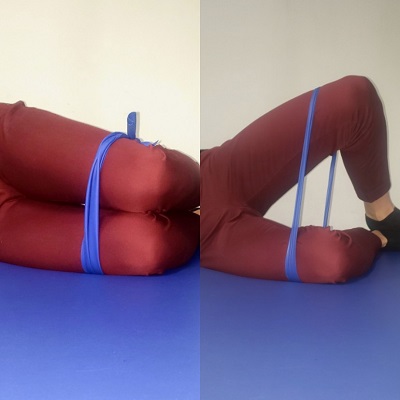
2. Squats: Squatting will increase the strength in the buttocks and top thigh muscle.
- Place feet shoulder width apart
- Keeping your toes pointed forward and feet planted make your buttocks go backward
- Ensure your knees are not going over your toes
- Push back up though your feet and at end range of standing tighten your buttocks
- Perform 3 sets of 10
- Perform 3 times per day
- *Use a countertop for balance if needed
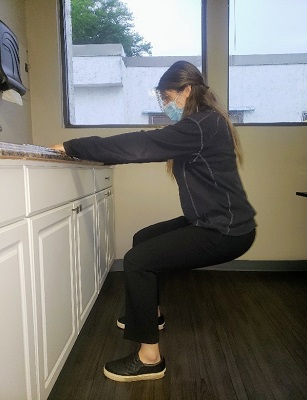
3. Marble pick up with single leg stance: This exercise challenges your balance on the opposite leg while working the deeper small muscles in your foot. These muscles aide with maintaining a neutral position of the foot, stability, and balance.
- Place 10-15 marbles on the ground near an empty cup
- While holding to a countertop or stable surface spread toes apart and squeeze marbles
- Lift marbles to cup and release into cup
- Perform for 3 mins 2 sets 3 times a day
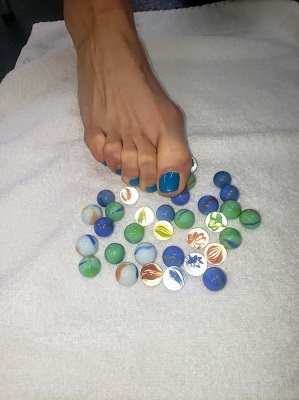
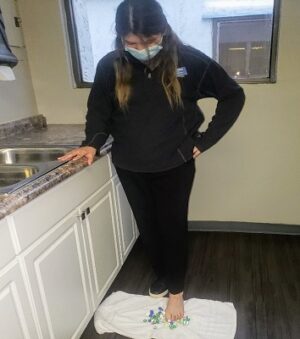
4. Ball roll on your arch: The arch of your foot will likely change after your amputation. It may become fatigued or even achy at times. To reduce symptoms, you could try massaging it. Massaging this muscle will allow for the muscles and tissues of the bottom of the foot to be more relaxed.
- Obtain a ball that allows for smooth rolling
- Place the ball on the ground and place your foot on the ball at the middle of the arch
- Move it in circles or back and forth
- Perform 1 minute 3 times in a standing or seated position
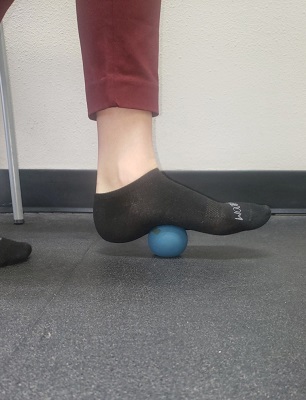
5. Seated heel toe raises:
- Place both feet on the floor
- Push down through the toes
- Relax and place feet flat on floor
- Lift toes up towards ceiling
- Perform 3 sets of 10
- Perform 3 times per day
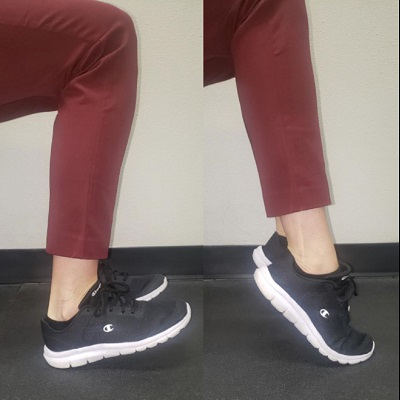
The big toe is a big deal but the fact is, you can still live a happy and healthy life. You may teeter a bit and might even fall, but don’t fret. With a qualified physical therapist, good mindset, and the right exercises you will be well on your way to being a bigger deal than your big toe! If you have balance concerns, reach out to your nearest Athletico for a free assessment. Free assessments are available in-clinic and virtually through our Telehealth platform.
The Athletico blog is an educational resource written by Athletico employees. Athletico bloggers are licensed professionals who abide by the code of ethics outlined by their respective professional associations. The content published in blog posts represents the opinion of the individual author based on their expertise and experience. The content provided in this blog is for informational purposes only, does not constitute medical advice and should not be relied on for making personal health decisions.
Reference:
1. Binns, Corey. “Fact or Fiction?: No Big Toe, No Go.” Scientific American, 3 May 2007, www.scientificamerican.com/article/no-big-toe-no-go/.

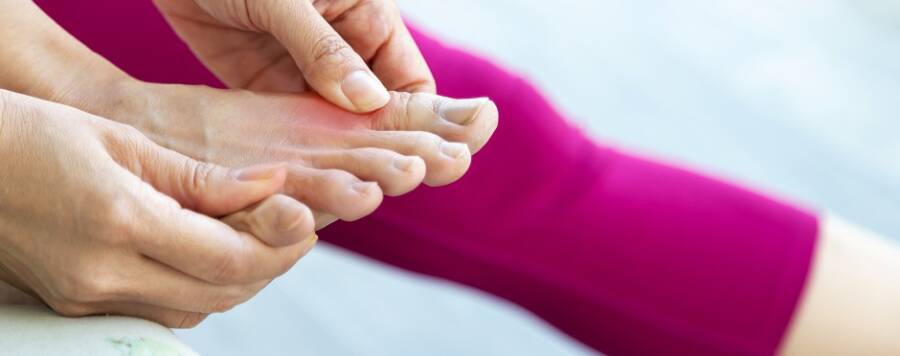 width="900"
height="356"
>
width="900"
height="356"
>

3 Comments
Mark Berry
The problem i have experienced with having my toe removed i was sent with a large hole where my big toe was, the problems i have now are the toe next to my big suffers terribly rubbing and soreness i have to put plasters on my toe and the pain is terrible
Debbie
Just wanted to know if someone with a big toe amputation can still roller skate?
I have been wanting to return to roller skating since I recovered from my knee replacement 12years ago, My doctor said I could absolutely try skating again.
But is it possible to roller skate with a big toe amputation?
ForDebbie
For Debbie I have had one big toe amputated, and I am able to roller skate. I am not a good skater, but can skate like an average person.
Shoe selection is more critical. I need to have wide shoes, and shoes with stiffer soles and that is enough for me. If I overdo it, the next toe over can have sore joints from over loading. Usually some Advil and taking it easy and in a few days it has calmed down.